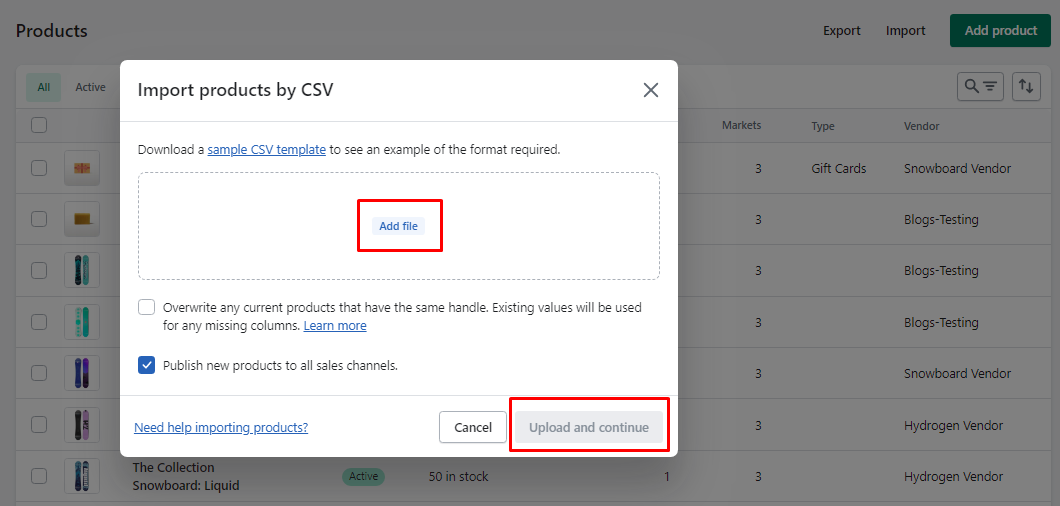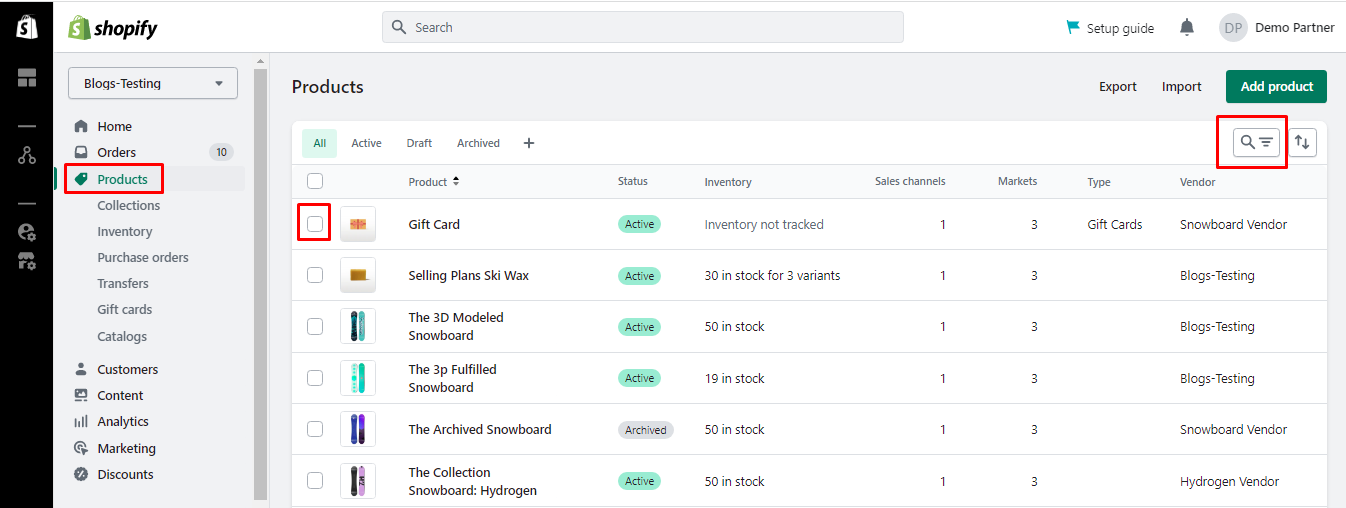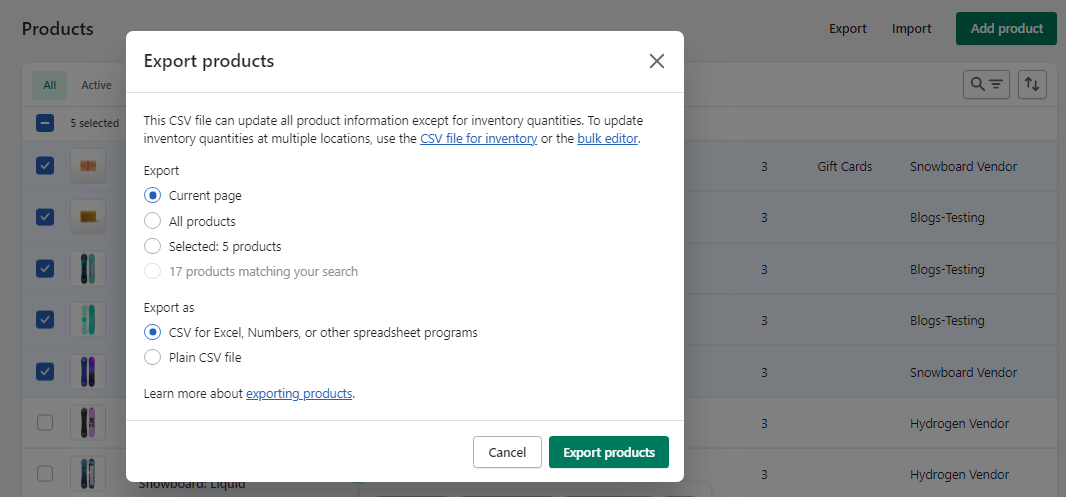Hello Shopify Friends,
Today I am here with a new topic. It’s about How to Import and Export Inventory in Shopify.
It is a tedious and time-consuming task to manually manage inventory for eCommerce store owners dealing with many products. CSV files allow you to bulk update your inventory by adding new products, updating existing ones, or adjusting stock levels.
Shopify also provides the functionality to import and export inventory in Shopify. Let’s find out the detailed steps for Shopify import inventory and Shopify export inventory.
How to Import Inventory to Shopify?
Step 1: Prepare a CSV file
- Create a CSV file containing your inventory data.
- Include columns for product information such as title, description, price, SKU, quantity, and other relevant details.
- Your inventory CSV file must be in a .csv file extension.
- You can create your CSV file using spreadsheet software like Microsoft Excel or Google Sheets.
Step 2: Shopify Import Inventory
- Log in to Shopify Admin Panel.
- Click on Products in the left-hand menu.
- On the Products page, click the Import button at the top right corner.
- Click the Add File button and select the CSV file you prepared earlier.
- Once the file is successfully uploaded, click on Upload and Continue button.
All the products and details will be successfully added to your Shopify store.
How to Export Inventory from Shopify?
Step 1: Select products for Export
- Log in to Shopify Admin Panel.
- Click on Products in the left-hand menu.
- Select the products you want to export by checking the box beside the respective product or applying search and filter options.
- Now, click on the Export button located at the top right corner.
Step 2: Shopify Export Inventory Options
- In the export popup window, select the export options. You can choose to export the CSV file with products currently visible on the page, all products, selected products and products that match your search.
- Select the type of CSV file to be exported.
- At last, click on the Export products button to generate the CSV file.
- Once the export is complete, a download link will be provided. Click on the link to download the CSV file containing your inventory data.
Final Thoughts:
Following these steps, you can import and export inventory in Shopify using CSV files. Instead of uploading products in bulk using the import CSV option in Shopify, you can also Add Products in Shopify manually. To manage your inventory efficiently, get in touch with experienced Shopify developers.
Share the informative guide on Shopify Import Inventory and Shopify Export Inventory with your friends and social media handles. Stay updated for more Shopify solutions.
Happy Reading!
—————————————————————————————————————————————–
Frequently Asked Questions
(1) How can I import inventory into Shopify?
Answer: To import inventory into Shopify, you can use a CSV file containing your product data. Shopify provides a built-in import feature that allows you to map the CSV columns to the appropriate fields in your Shopify store.
(2) What information should be included in the inventory import file?
Answer: The inventory import file should include essential information about your products, such as SKU, title, description, price, variant options, and inventory quantities. Additional fields can be included for specific requirements or features.
(3) Can I update the existing inventory using an import file?
Answer: Yes, you can update existing inventory using an import file. By including product identifiers (such as SKU or variant ID) in the import file, Shopify will match the records and update the specified fields accordingly.
(4) How do I export inventory from Shopify?
Answer: To export inventory from Shopify, you can use the Shopify admin interface or a third-party app. In the Shopify admin, navigate to the Products section and select the products you want to export. Then, choose the Export option and customize the export format based on your needs.
(5) What file formats are supported for inventory import/export in Shopify?
Answer: Shopify supports CSV (Comma-Separated Values) files for both importing and exporting inventory. CSV files are widely used and can be easily created or edited in spreadsheet applications like Microsoft Excel or Google Sheets.













